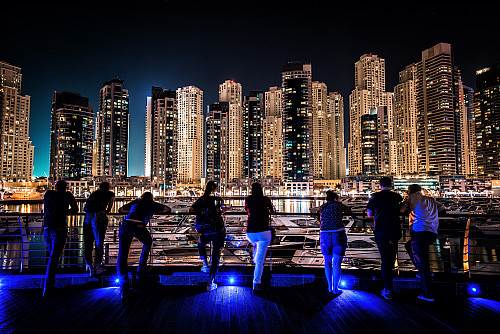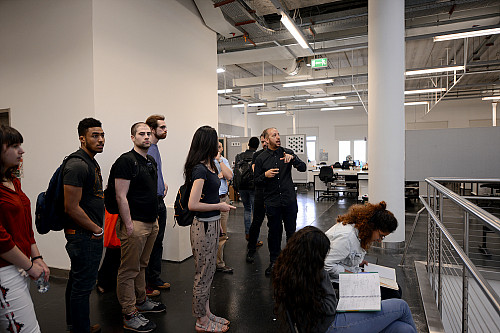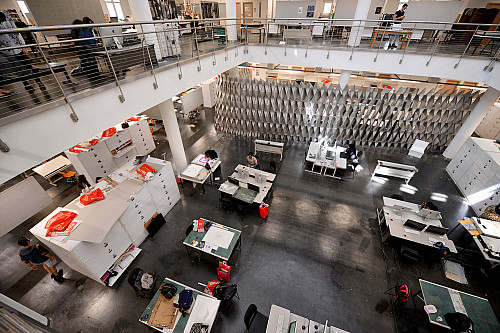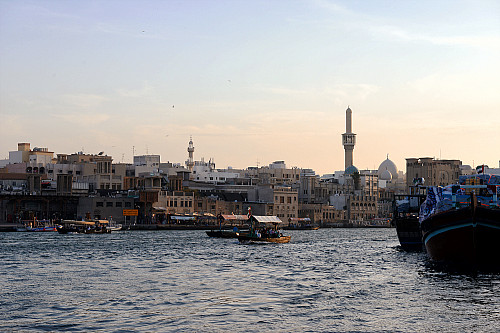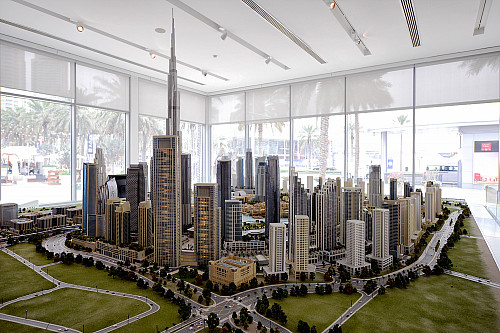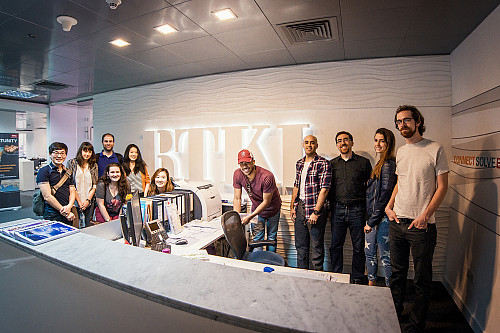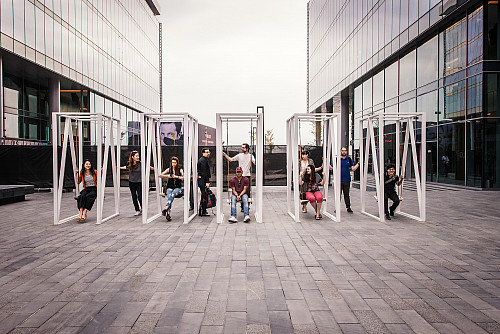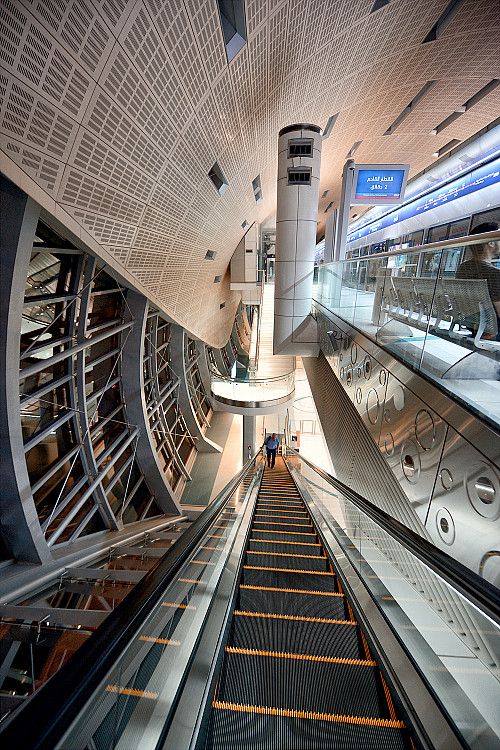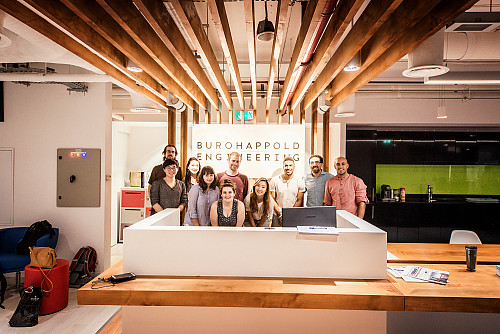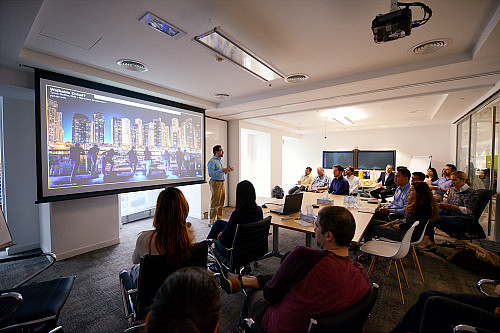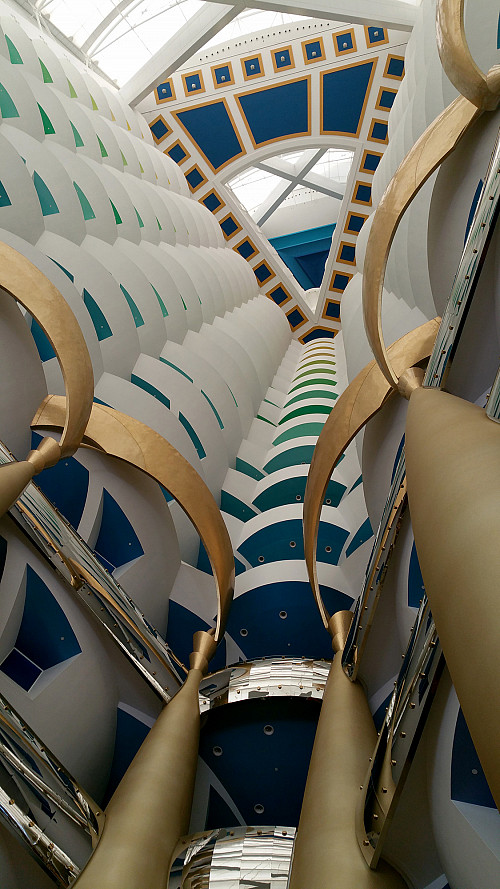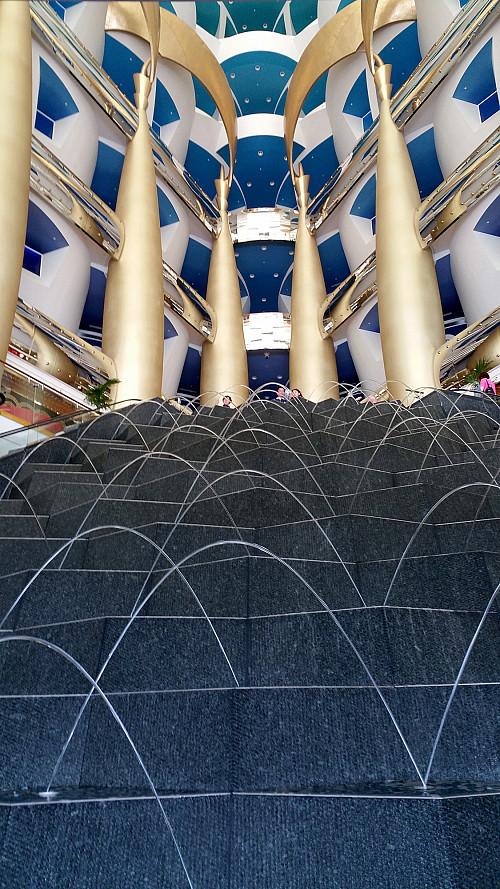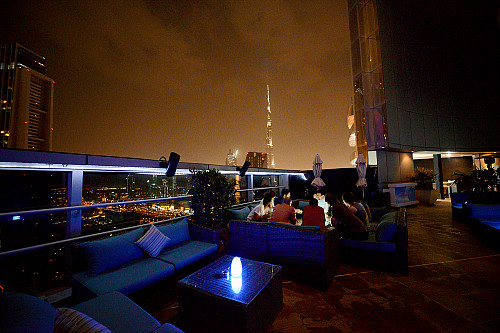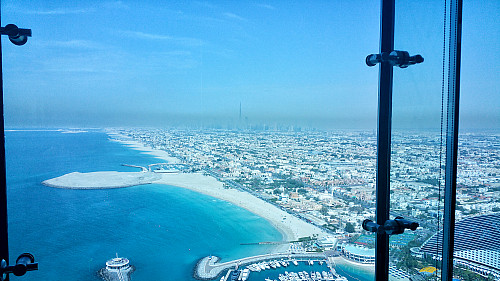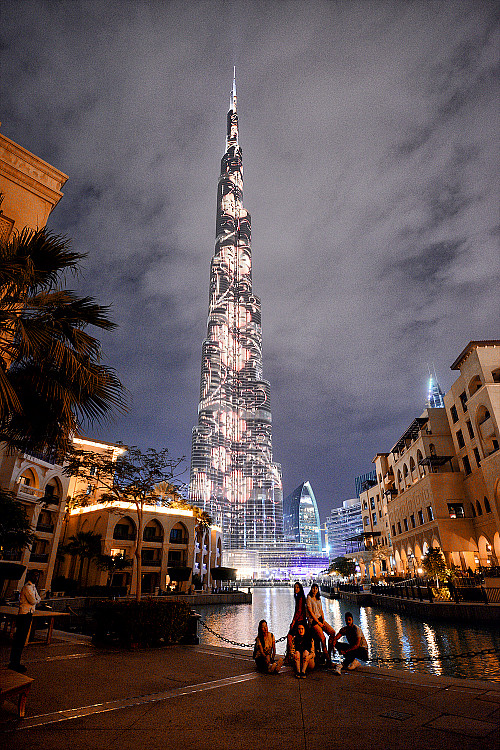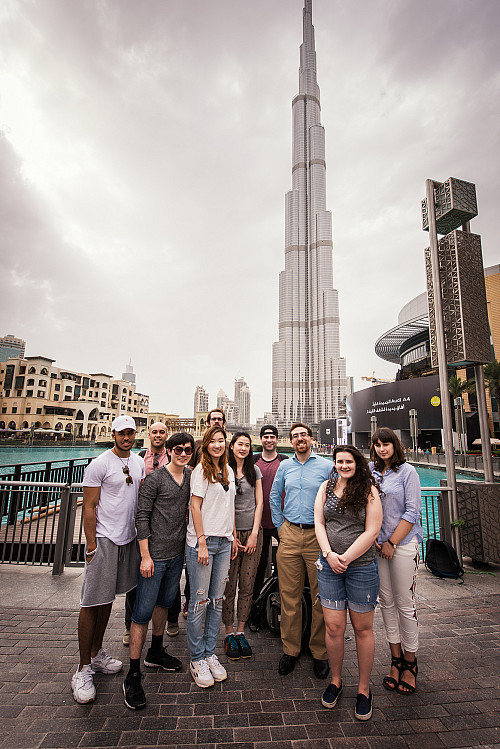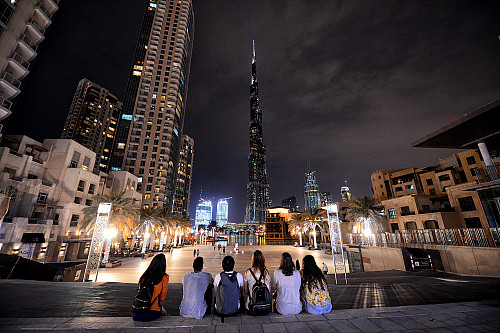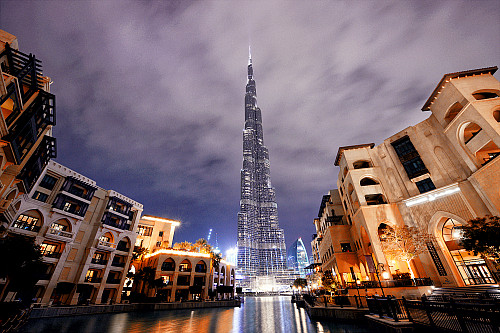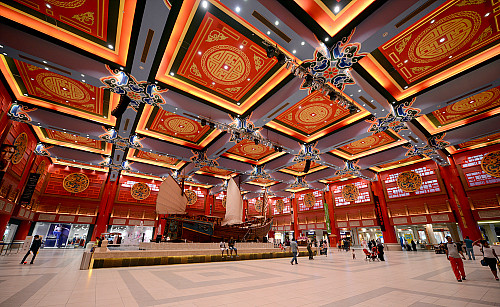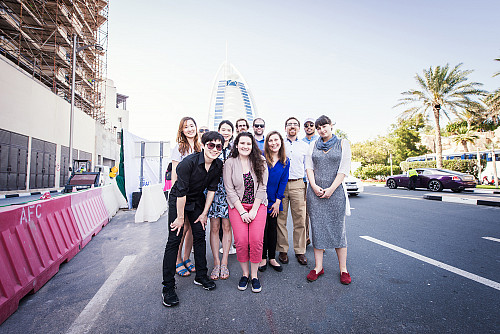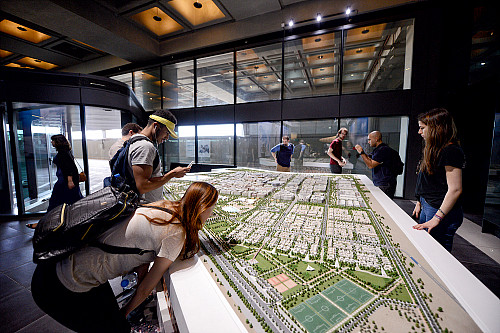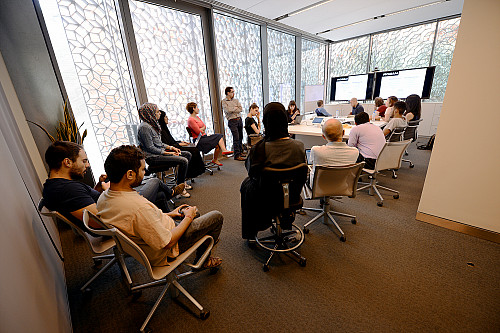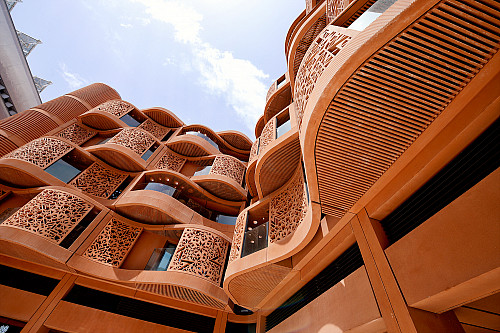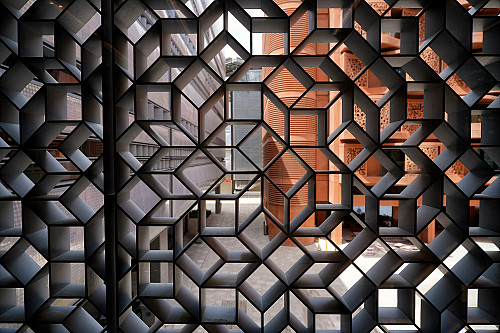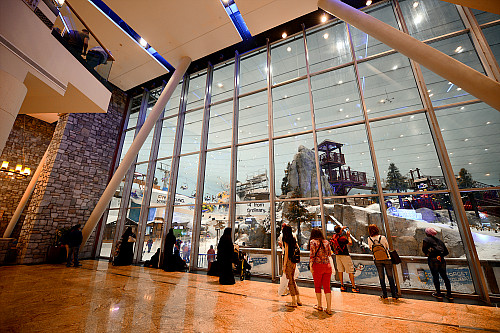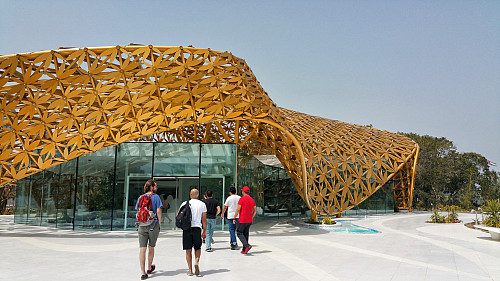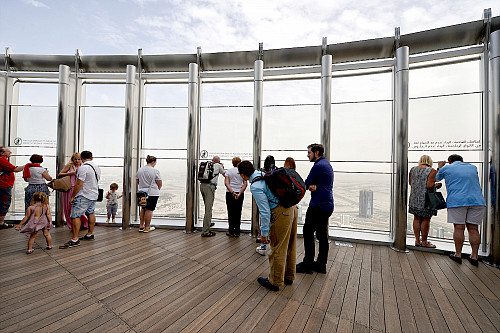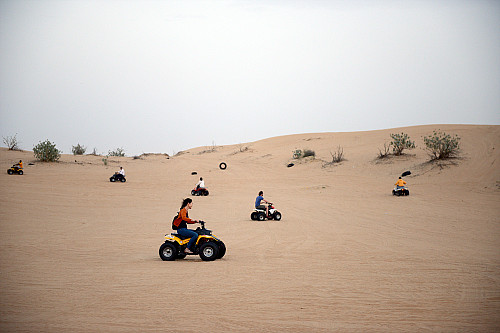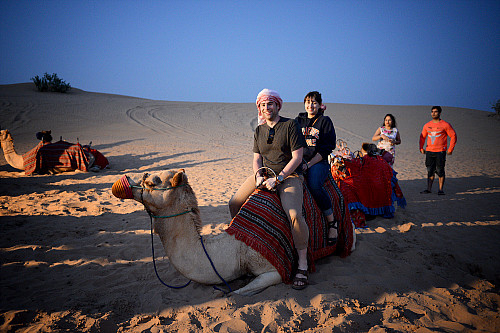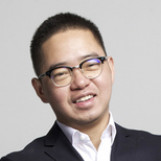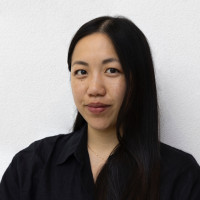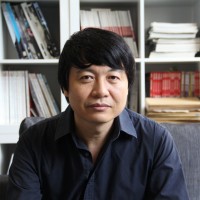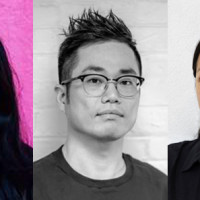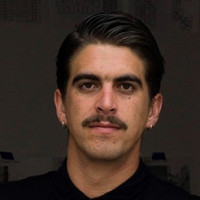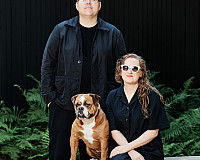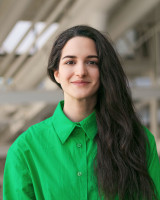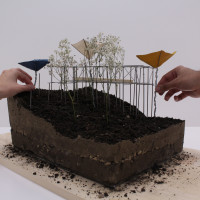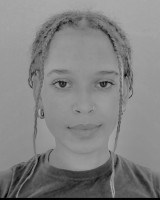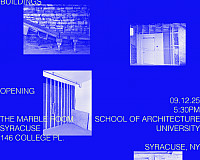Within a small setting, students work in teams to pursue a common studio objective. They learn to consider a full range of contextual factors in their work through site visits and first-hand engagement with cross-disciplinary thought leaders in public and private sectors.
In spring 2016, ten students in Assistant Professor Tarek Rakha’s “Sustainable Start Ups in the Desert” studio received a once-in-a-lifetime educational benefit, a 9-day trip to Dubai during spring break, thanks to the generosity of Saudi-based firm El Seif Engineering Contracting Company.
“The Dubai trip was an exhilarating learning medium for Syracuse Architecture students,” says Rakha, who is also a Center of Excellence faculty research fellow. “Not only did they experience one of the built environment spectacles of the Middle East, but also they presented their projects for feedback from prominent practicing architects and engineers in the region, as well as academic leaders focusing on energy in buildings.”
“What made this trip so memorable for me,” says Rajwa Alseif ’17, “was seeing the students in the studio experience Arabic culture and architecture for the first time. Dubai is very intriguing, having contemporary architecture while also attempting to maintain the traditional beauty of the Arabic culture and history.”
Dubai is inarguably one of the world’s most spectacular cities. The City’s amenities are often accompanied by descriptives such as “world’s largest,” an outgrowth of an affluent, oil-rich economy. But Dubai’s sprawling development in the face of climatic conditions have created unique challenges … and opportunities. Increasing knowledge and technologies in the area of sustainable design practices are paving the way for new thinking.
In his studio, Tarek Rakha’s students have been developing speculative approaches to sustainable design of an entrepreneurial start-up campus on a site located in the heart of Dubai. The studio project has been divided into three stages: urban campus design; start-up incubator building development; and feasibility analysis of developed design, with a focus on energy and sustainability. During their trip, students benefited from an incomparable range of experiences to inform their projects.
Beginning with a visit to the American University of Sharjah, students attended a lecture that gave them background on early master planning and socio-economic factors that influenced Dubai’s development. “A trip to ‘Old’ Dubai,” says Colin Hoover G’17, “gave insight into both cultural heritage as well as potential passive strategies that could be used to reduce energy in contemporary buildings.”
A visit to architecture firm CallisonRTKL gave students opportunity for a guided tour of Dubai in addition to critique on their midterm projects. Alice Gorodetsky ’18 reports that a visit to Dubai’s Design District (D3) included experience with an intricate model of the district’s master plan. Steven Veligrinis of Perkins + Will joined them to “discuss his design decisions and confer with the group about relevant topics in practice such as undesirable ‘green-washing.’”
A day that included a visit to engineering firm Buro Happold focused largely on the theme of extreme experience in the built environment. With Buro Happold’s John Sullivan as their guide, “we explored the biggest mall in the world,” says Yen-Chun Liu MS ’16, “and then took the world’s fastest elevator to the top of the Burj Khalifa, the tallest building in the word.” A follow-up tour of the firm ended with students presenting their projects for feedback by firm consultants.
“In Masdar City in Abu Dhabi,” reports Christian Martinez G’17, “we had opportunity to use the famous and fully automated Personal Rapid Transit (PRT) system to travel to the Masdar Institute.” Students delivered quick project presentations to the Masdar Institute engineering team and learned about the Institute’s Abu Dhabi-based research.
Additional outings throughout the city region—including the Sheik Zayed Grand Mosque (UAE’s largest)—provided students with additional insight, but there was also time for “just fun” experiences including a desert safari, dune dashing, and camel rides.
The studio is in its final phase of project development and preparing for a symposium, “Start Ups in the Desert: Finding Value in Environmentally Responsive Built Environments,” on Monday, April 25, from 9-12 in the Slocum Hall 1st floor atrium. Discussions and presentations will focus on the architecture and urbanism of the UAE, Dubai, the Gulf, and the value of sustainability in the desert. The symposium will also serve as the final review of student projects. Guest presenters with Gulf-based work expertise include: D. Rodman Henderer, Sr. VP, RTKL and Chair, Syracuse Architecture Advisory Board; Christoph Reinhart, Assoc. Prof., MIT School of Architecture and Planning; and Nezar Alsayyad, Prof. of Architecture, Planning, Urban Design and Urban History, College of Environmental Design, University of California at Berkeley.
Says Alseif, the symposium student organizer, “The studio is looking forward to participating in this culminating event, sharing their projects with other students and faculty, as well as learning from an interesting team of experts who will provide helpful insights on sustainability issues in the Gulf.”
(Credit to student reporters Austin Adams ’18, Alice Gorodetsky ’18, Colin Hoover G’17, Victoria Hughes ’18, Yen-Chun Liu MS ’16, Seungah Sally Lee MS ’16, Christian Martinez G’17, Killian Miles G’17, and Derek Dongmin Shin ’18.)
(by Elaine Wackerow)
